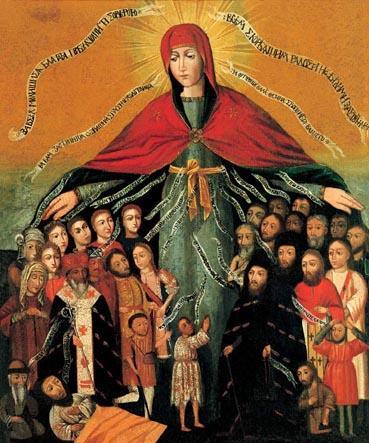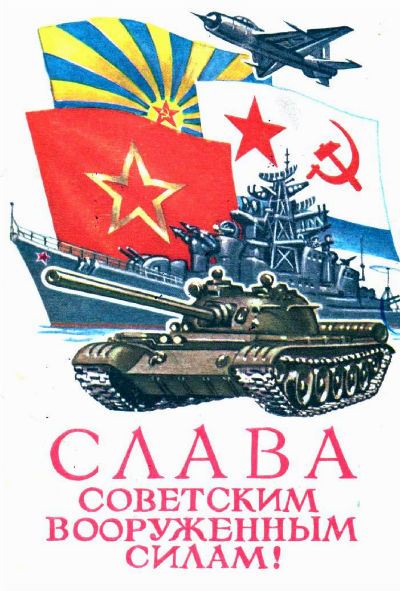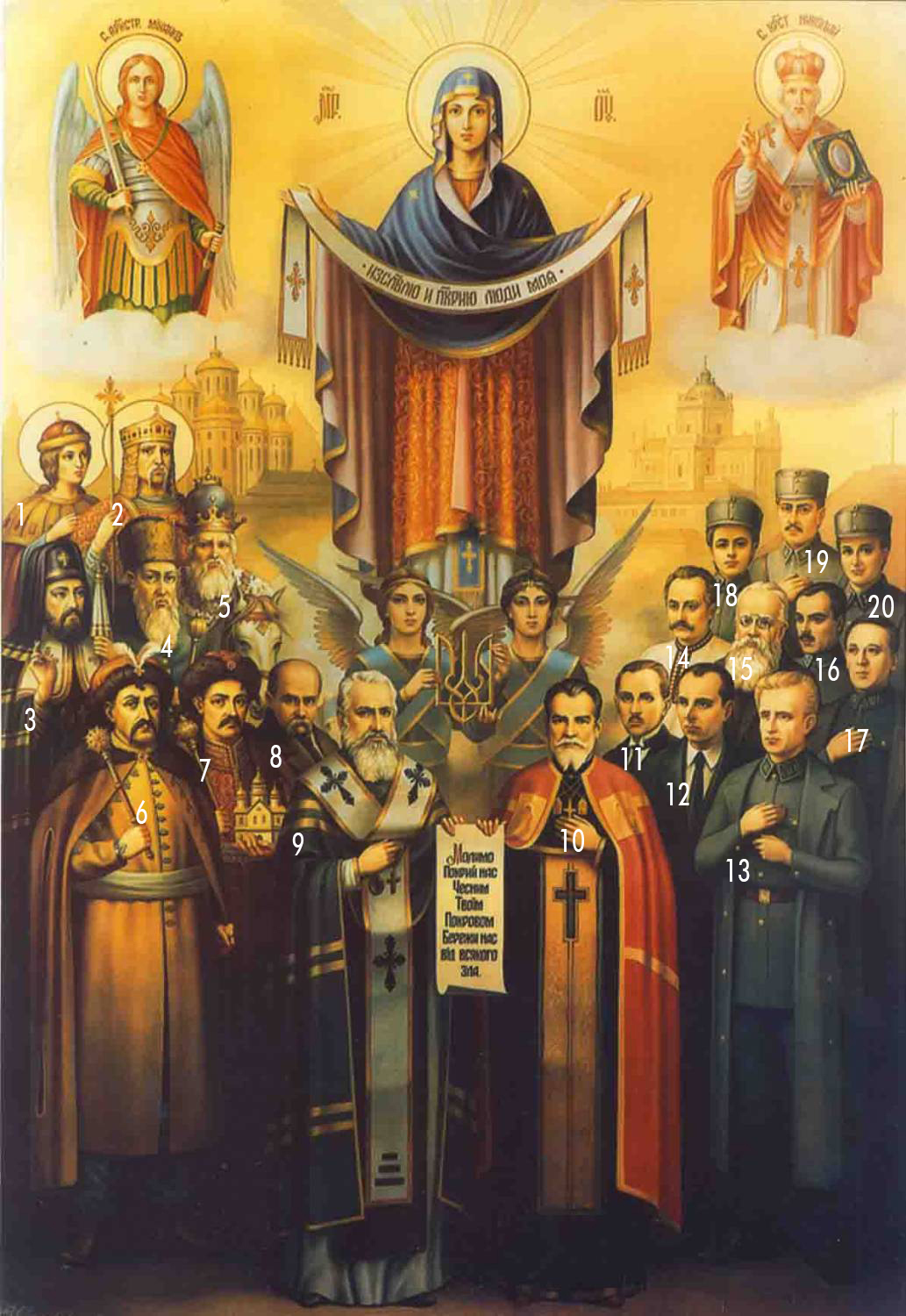On October 14, Ukraine's President Petro Poroshenko proclaimed October 14, the day of celebrating Pokrova, or Intercession, of the Virgin Mary, a new state holiday - the Day of Defender of Ukraine.
President #Poroshenko proclaimed October 14 the Day of Defender of Ukraine http://t.co/fBblrHyZHZ pic.twitter.com/6m1LIz4foI
— Офіс Президента (@APUkraine) October 14, 2014
This decision did not come suddenly. Back on Independence Day celebrations on 24 August 2014, Poroshenko was quoted as saying:
“The phrase ‘Defender of the Fatherland’ has ceased to be a mere abstract and ritualistic expression. Now it has acquired a concrete significance… In the rich and varied history of Ukrainian armies, there are countless battles and dates worthy of being elevated to a Day of the Defender of the Fatherland. I repeat: Ukraine will never again commemorate this holiday by following a historical battles calendar of a neighboring country. We will honor defenders of our Fatherland, not a foreign country’s!”
Ukraine under the protection of the Virgin Mary

The Orthodox feast day of the Intercession of the Virgin Mary
, October 14, is considered to be the symbolic day of the founding of the UPA, the Ukrainian Insurgent Army active during World War II, as well as one of the main holidays of the Ukrainian Zaporozhzhian Kozaks, the proto-Ukrainian military and political force that challenged the authority of the Polish–Lithuanian Commonwealth, the Tsardom of Russia, the Ottoman Empire, and its vassal the Crimean Khanate over the 16-18th centuries. In the Ukrainian tradition going back to even the medieval times of the Kyiv Rus, the Intercession of the Virgin Mary is interpreted as a symbolical act of protecting and blessing the Ukrainian people. This is reflected in icons like the one on the mid-17th century one on left from the old village of Stara Sil in West Ukraine, with the Virgin spreading her cloak above representatives of different social classes, including Kozak leaders.
Soviet tradition of Defender of the Fatherland Day

Previously, the day to celebrate defenders of Ukraine was February 23, called Defender of the Fatherland Day. The story behind February 23 is one of the Red Army, commemorating the dates when the first mass draft into the Red Army occurred in Petrograd and Moscow, and then the date of the establishment of the Red Army. It was first celebrated in 1919.
In 1949, the holiday was renamed into the Soviet Army and Navy Day, and following the fall of the Soviet Union, it was given its name of Defenders of the Fatherland Day by Vladimir Putin. Until October 14, 2014, it was celebrated by Russia, Belarus, Kazakhstan, Tajikistan, and Ukraine. Now Ukraine has parted with this tradition.
It's not the first time that Ukraine tried to part ways with the Soviet traditions to celebrate defenders of the country. Previously, the Ukrainian government attempted to designate December 6 as Armed Forces Day, but the holiday never got attention comparable to post-Soviet February 23. In 2008, President Yushchenko attempted to move the holiday to January 29 to honor the students in the Battle of Kruty, but it never got traction either. As of October 14, this Soviet holiday will be no more in Ukraine.
Breaking free of the Soviet legacy
Is changing the day of a holiday really such a big deal? There are many reasons to conclude "yes."
Going beyond a black-and-white interpretation of the World War II
Although the holiday of February 23 was first celebrated in 1919, its modern celebratory tradition is one that draws heavily on the concept of the "Great Patriotic War," as World War 2 in the period of 1941-1945 on the extents of the USSR was dubbed by Soviet historiographers. Referring to the struggle between the Soviet Union and the Third Reich in 1941-1945, this designation is still dominant in the Russian information space. It serves an important ideological and even mythological purpose, propelling and glorifying the notion of Soviet forces fighting off fascist invaders and perpetuating the idea of a still-existant unity of nations that emerged after the fall of the Soviet Union. It also simplifies the story of World War 2, creating the image of the "good" and "bad," ignoring the collaboration between two totalitarian states embedded in the Molotov-Ribbentrop pact
and the struggle for independence that national forces such as the UPA were leading, sandwiched from all sides between enemy forces. Celebrating Defenders of Ukraine on October 14 allows to go beyond the black-and-white painted by Soviet historiography.
A continuity back to the 10th century

A modern icon of the Intercession of the Virgin Mary embosses another view at the Defenders of the Fatherland, one that takes us on a journey through episodes of Ukrainian statehood going from the medieval state of Kyivan Rus with its center in Kyiv and spanning large extents of modern-day Belarus and Russia (figure 2 - Volodymyr the Great, Prince of Kyivan Rus) and its western counterpart, the Kingdom of Galicia–Volhynia (5- Prince Daniel of Galicia), going through Kozak times (6 - Kozak leader Bohdan Khmelnitskyi and 7 - Ivan Mazepa), and continuing through Ukraine's struggles for statehood in the aftermath of WW1 (leaders of the Ukrainian People's republic, a Ukrainian political formation that struggled for independent statehood after the demise of the Russian and Austro-Hungarian empires: 15 - Mykhailo Hrushevskyi, 17 - Simon Petlura; figures of Sich Riflemen, the first regular military units of the Army of the Ukrainian People's Republic: 16 - Dmytro Vitovskyi) and during WW2 (leaders of the Ukrainian Nationalist Movement OUN: 13 - Roman Shukhevych, 12 - Stepan Bandera). Such a continuity of historical tradition is detrimental to the concept of the Russian world, in line with which historical facts are being twisted to suggest that Ukraine does not have a story of its own statehood, and thus belongs under the wing of mother Russia.
Recognition for Ukrainian forces who fought against Russians
Another way that celebrating Defender of Ukraine day on October 14 means breaking free of the Soviet and Russian legacy is by giving room for recognition of forces that fought against Red Army and Soviet powers, such as the army of the Ukrainian People's republic and the UPA, which recognizes 14 October as its founding date. Vilified in Soviet times, the role of these military formations gradually getting more appreciation and attention. This gains a special meaning nowadays, as thousands of Ukrainian men and women are giving their lives to fight off the regular Russian army invading its East. The Defenders of the Fatherland today fight against the very same forces that were considered to be Ukraine's closest allies and even brothers. President Poroshenko emphasized this on August 24:
" The events of the past months have become for us a very real, although undeclared, war. Perhaps it will enter the history books as the 2014 War for the Fatherland – a war against foreign aggression, a war to defend Ukraine, its freedoms, its honor and glory, its peoples, its independence.”
New holiday condemned by Russia
Unsurprisingly, the Russian President Vladimir Putin has condemned the new holiday in a recent speech at a meeting of the presidential Council for the Development of Civil Society and Human Rights on 14 October. He has accused the Ukrainian government of promoting the Ukrainian Insurgent Army (UPA), a nationalist paramilitary group active during and shortly after World War II, and conniving in the seizure of Russian churches in Ukraine, accusing the UPA of being a "fascist" organization. Previously, Russian media had publicized a media provocation with the motto 'Death to Muscovite Priests!,’ falsely ascribing it to the ultra right-wing in Ukraine, to which the Ukrainian Security Service released a caution describing the fake and provocative nature of these calls.
Altogether, such an seemingly insignificant event as changing the date of a celebration of Defenders of the Fatherland day ultimately means that the centerpoint of the Fatherland in Ukraine has officially shifted westward, from Moscow to Kyiv. In a pivotal point of its history, Ukraine is breaking free from the stifling embrace of the Soviet Empire.





